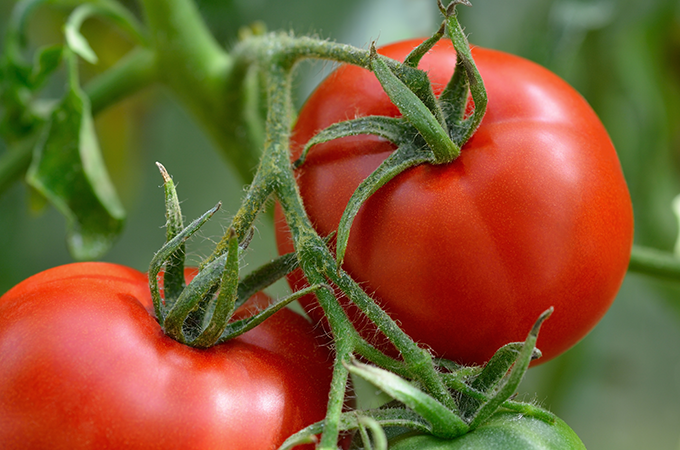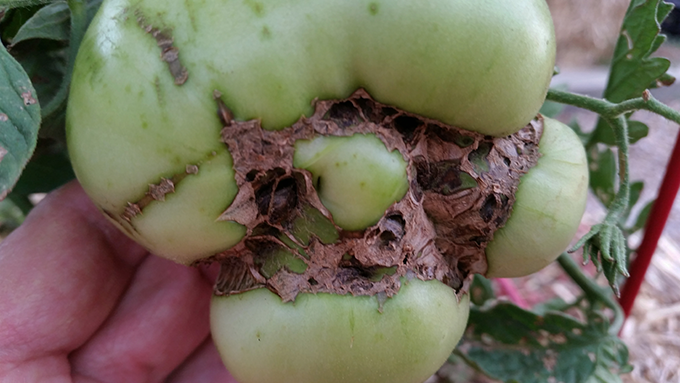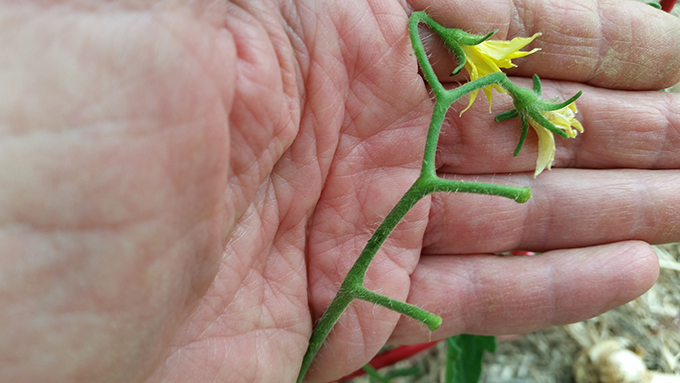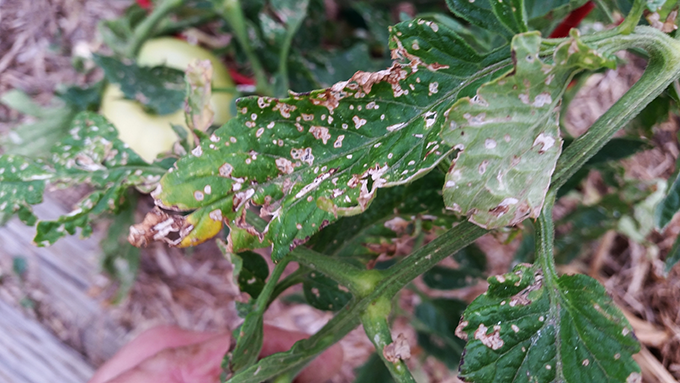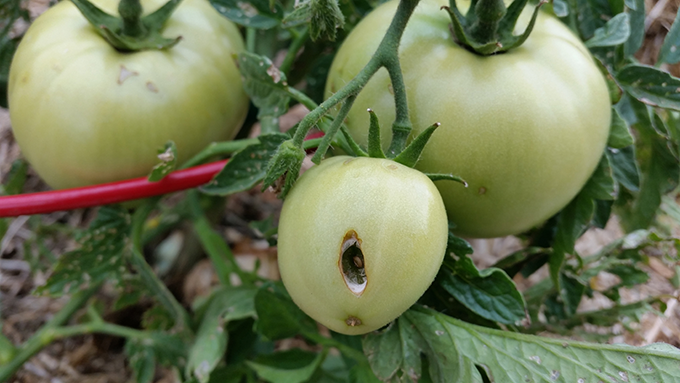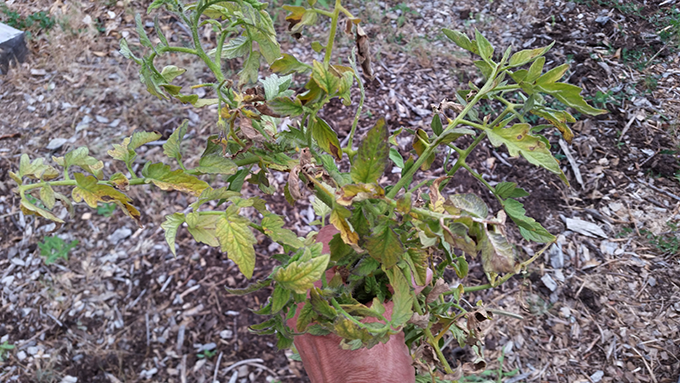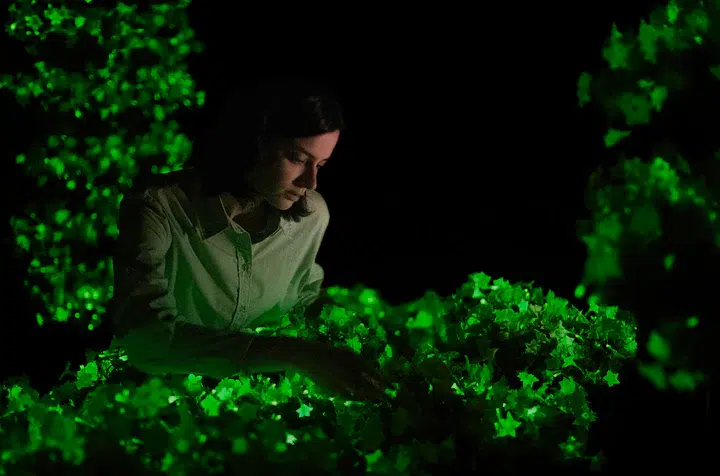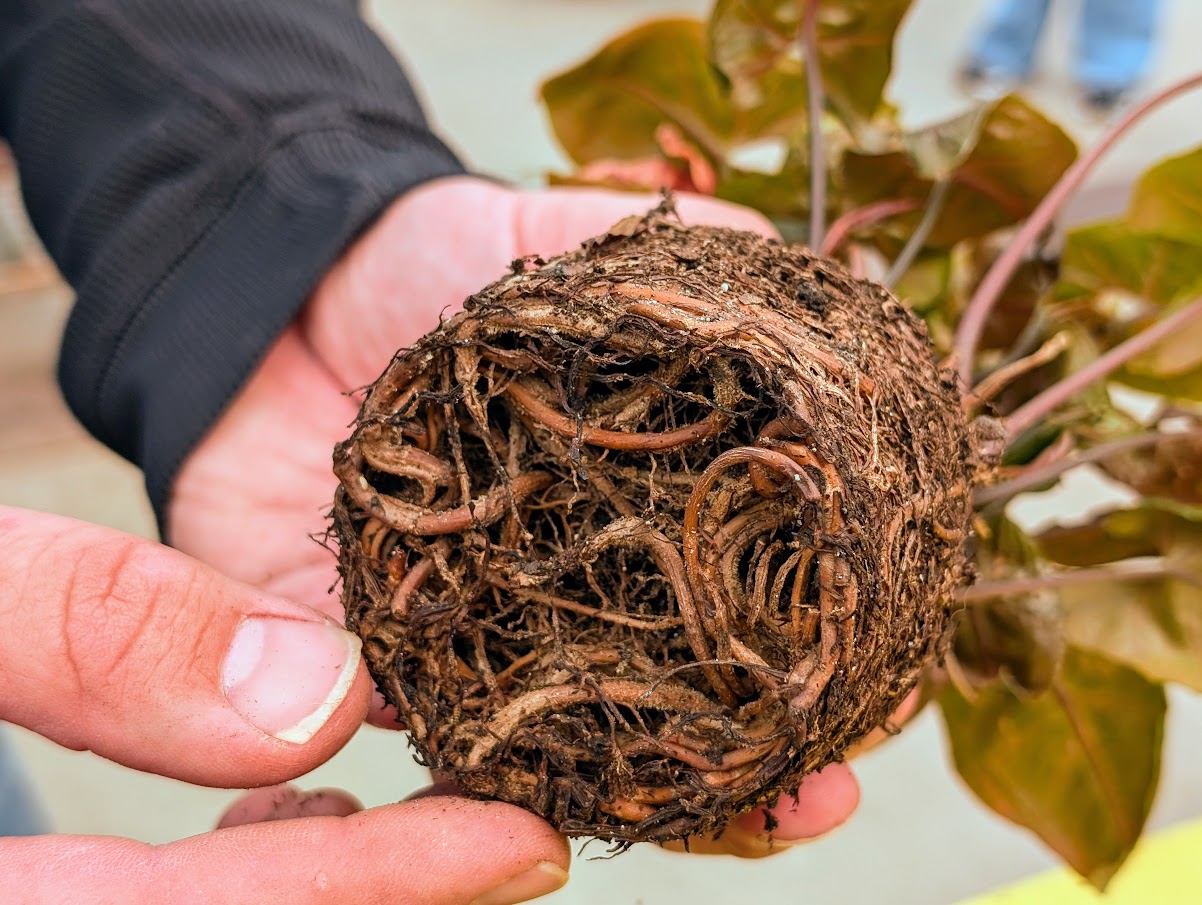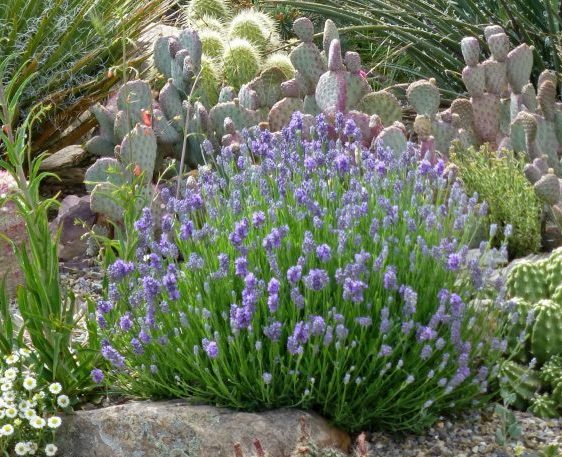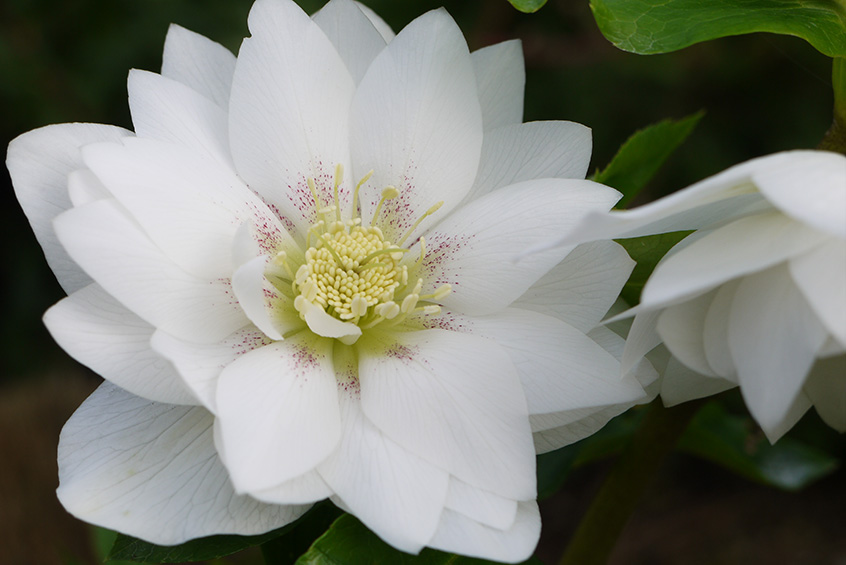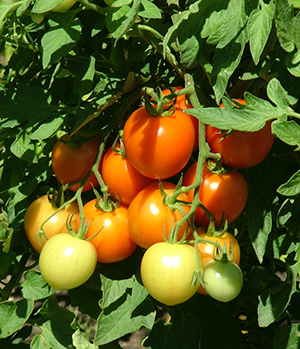 Is there anything I can do? Yes…. and no.
Is there anything I can do? Yes…. and no.
No one ever said that growing tomatoes on Colorado’s Front Range is easy, but it sure can be worth it. Even before my plants are in the ground, I can almost taste the juicy sun-warmed tomatoes I’m hoping for. Kind of like Goldilocks…. I want tomatoes that are not too tangy and not too sweet. I want them just right.
So I experiment with different varieties. I improve the soil with compost. I mulch them liberally with straw and water them carefully. I know that’s what it takes. But sometimes, even with a lot of T.L.C., one or two of my dozen or so plants just don’t thrive.
Sound familiar? Then read on!
Mother Nature is partly to blame
Two of the issues I’m seeing are a function of the weather…. specifically, temperature-related problems…. nights that were too cool or days that have been too hot.
Let’s start with a condition called “catfacing.” Did you ever think you were looking at a big beautiful tomato only to realize that the bottom of the fruit was a maze of bumps and crevices… like something out of a science fiction movie? That’s called catfacing. It’s caused by stress to the blossom just after it’s pollinated. Nighttime temperatures of 55 degrees and below are often to blame. The cold damages the pollinated flower. The rest of the tomato puckers and bulges as it tries to develop around the damaged blossom and catfacing is the result.
Protective coverings like Walls o’ Water can help with the cool nights, but there’s not much we can do about the hot days.
Tagawa Gardens routinely offers more than 100 tomato varieties each spring. If your tomato crop is producing a lot of fruit with catfacing, let our veggie staff recommend tomato varieties that are more tolerant of hot weather.
No flower… no fruit?
Blossom drop is another temperature-related problem. Temperatures above 85 degrees can damage the pollen so much that the flower simply fails altogether and drops off. All that’s left is the tiny stem that once held it.
I’m curious to see how my plants react to the current heat wave that’s routinely taking daytime temperatures well into the 90’s. Fingers crossed! Again, there’s not a lot we can do about hot temperatures other than choose varieties that seem to deal with it better.
Signs of itty bitty beetles
Flea beetles are those tiny little bugs that just love to chew on young, tender foliage, leaving pinprick holes behind. They can doom newly-planted seedlings but are rarely a threat to larger plants that have more foliage to fall back on.
What I’m seeing now are lower leaves of plants that are deteriorating because of the damage they received much earlier in the season. They’re unsightly, but it’s good to recognize the damage for what it is and isn’t. Specifically, it is not a sign of a current insect invasion or disease. No sprays or special treatments are needed, other than on-going good care.
I just trim of the failing branches and toss ‘em.
I welcome the birds…. and tolerate a little damage
I have a lot of birds in my yard. Magpies, Jays, Orioles, Robins are the larger ones. And I welcome (almost) all of them, but they can occasionally cause a little damage to my tomatoes.
I’m seeing signs that some of them… probably the Magpies or Jays… have been checking out the ripening tomatoes. The shape of the hole they leave behind is a giveaway… exactly the size and outline of an inquiring beak.
The holes will generally tighten and shrink just a bit and won’t be an issue once the tomato ripens. The damaged section of the fruit can simply be cut off. But if my little bird friend has pecked through to the interior of the tomato and the seeds are visible, I pick it and toss it. A deeper hole makes it easy for bacteria to get inside the tomato and there’s a good chance that sooner or later the fruit will begin to rot. . No sense wasting the plant’s energy on that damaged fruit. Better to focus the plant’s energy on tomatoes that need it.
Know when to hold ‘em… and know when to fold ‘em
It happens almost every year. I plant ten or twelve tomatoes and for some reason, mid-season, one or two them just crash. Tomatoes can get a variety of diseases…. wilts and blights that turn the plant and the fruit all kinds of ugly. Yellow, blotchy leaves, foliage that wrinkles and curls, lesions on the tomatoes… None of it’s pretty. I yanked one such tomato just a few days ago. It was stunted and puny and needed to go away, so it did.
Heirloom tomatoes can be easy targets for these diseases. The plants simply don’t have any resistance. Old-fashioned taste often comes with old-fashioned susceptibility to bacterial and fungal infections.
Hybrid tomatoes that are a cross between two distinct parent plants are bred in part to be more disease resistant. The labels on many of the hybrids include a series of initials like “VFTN” that indicates the specific disease resistance that has been bred into that variety. If you have disease problems with your tomatoes, choose a hybrid that’s labeled to be more likely to stand up these infections, even if you don’t know specifically which disease your plants have. As I indicated in my last blog, mulching around the base of the tomato plants can help. It keeps disease spores in the soil from splashing back on the foliage when you water.
Because the microorganisms that cause tomato diseases can linger in the soil, there’s a standing recommendation to “rotate” your plants…. trying to avoid planting in the same place year after year. That’s not always possible in a small garden. Planting in large containers with fresh, clean soil can be a substitute for rotating your crop. There’s nothing at all wrong with setting that big pot in the middle of your garden as opposed to on your deck or patio where we often seen container-grown veggies. You may have to be more attentive with your watering since the above-ground roots are likely to dry out faster.
I’ve had disease problems with heirloom tomatoes in the past, so I’m trying a couple of straw bale gardens this year. So far, so good. I’ll keep you posted.
Bottom line, if you have a tomato plant that is clearly infected with a disease, get rid of it. A lot of different insects can easily move that infection from one plant to another. The odds of getting a good crop from that infected plant are pretty much zilch. Pull it. Bag it. Put it out for the trash truck. And keep it out of your compost pile. Disinfect your tools once you’re done. Don’t give those nasty little disease organisms a chance to deprive you of another lovely tomato.
